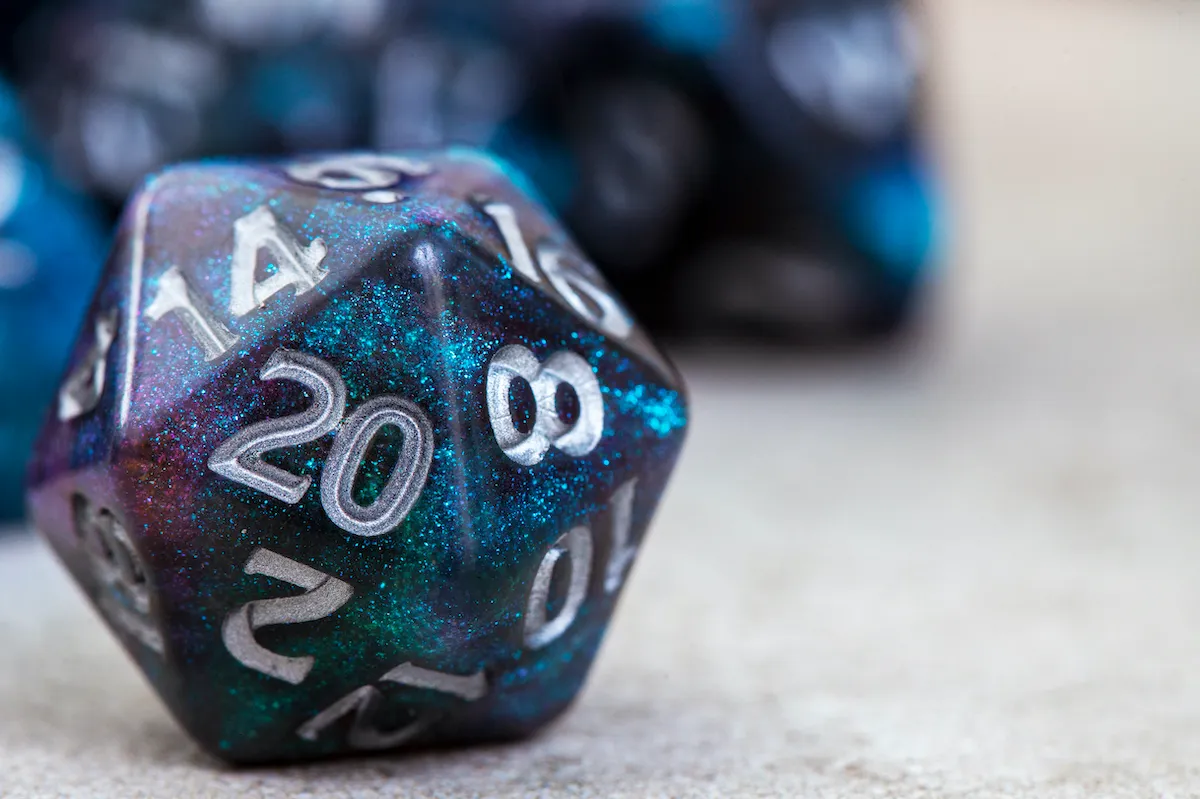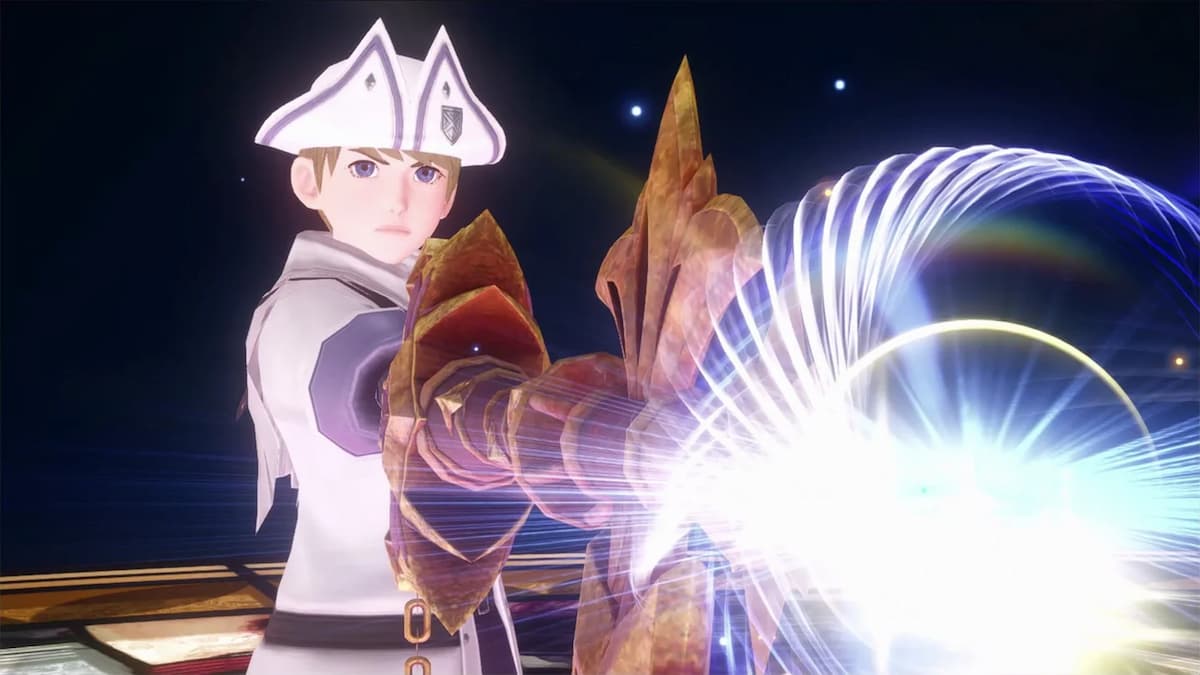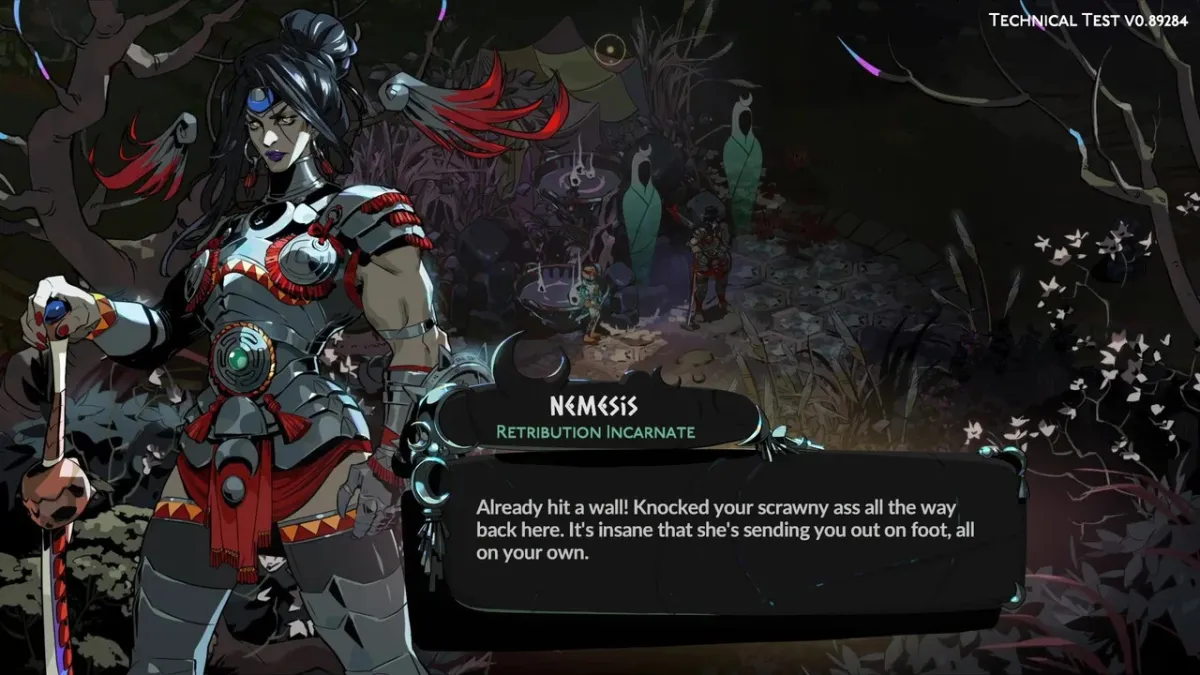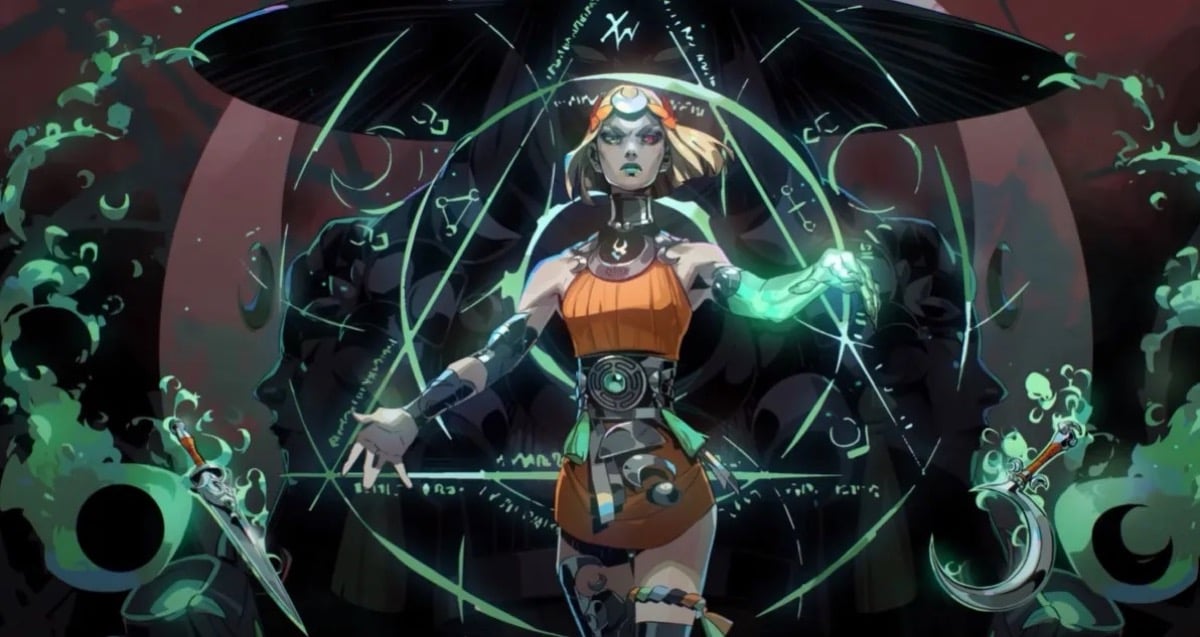You’ve seen them at the counter in the games store, shiny, colorful, alluring. Goblin brain says you have to have them, but grown-up brain says “stop wasting all of our money, you don’t even know how to use them!” Well, fear not goblin brain, because we’re here with a primer on D&D dice that will silence that internal killjoy by teaching you what each and every die is for. Then there’s no reason left not to collect a massive horde of sparkly, clacky treasure that you can run through your fingers like a cartoon pirate in between games. (I’m not saying this is the real reason to play D&D but I’m also not saying it isn’t).
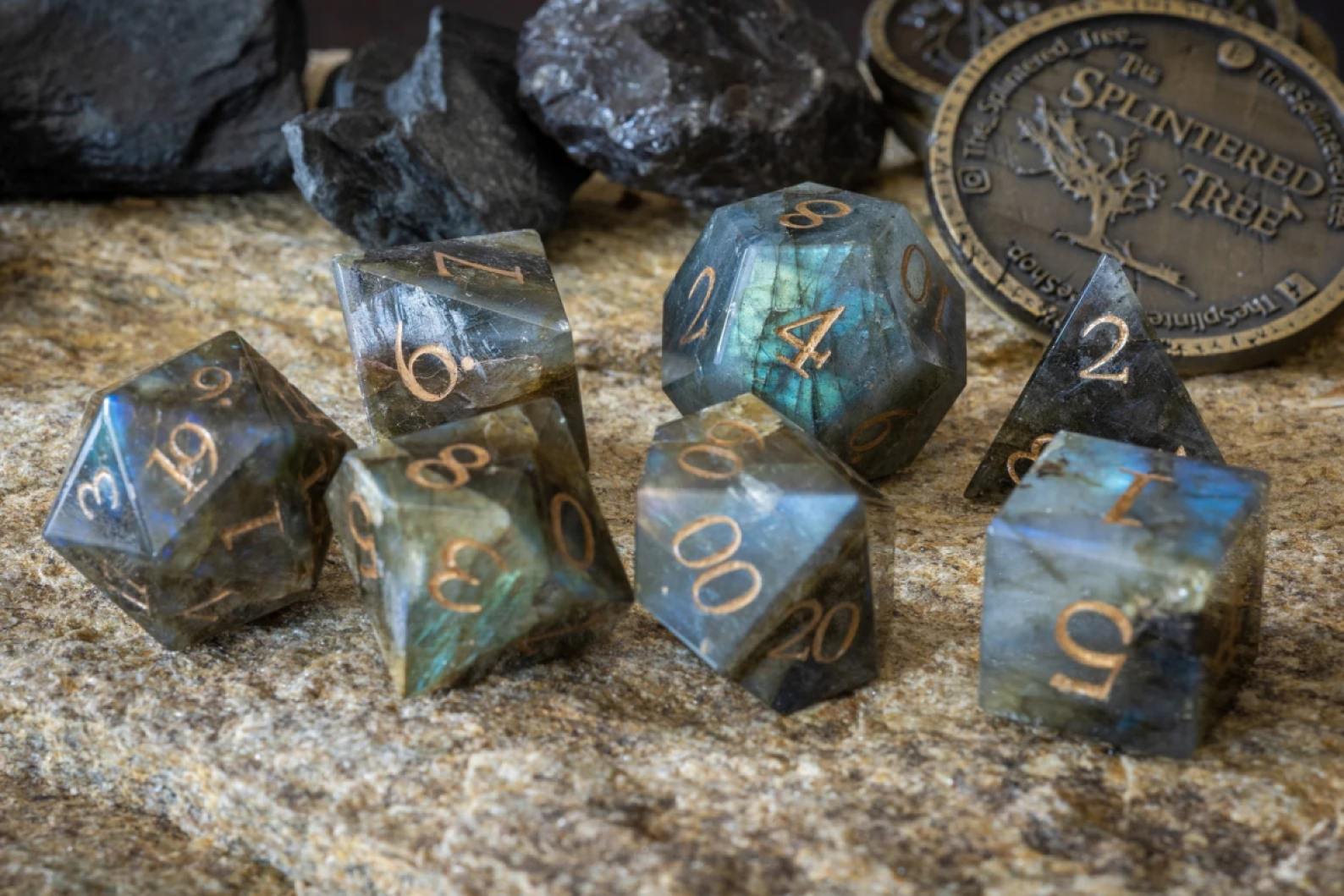
What is a D20?
The big boy, the true workhorse of any D20 dice set. Your D20 will be making most of the decisions for your character because you roll it to see whether or not you succeed at any given task, from lock picking to combat moves. Before you begin the game, you’ll have made a character sheet, laying out your character’s stats, skills, and combat scores. By combining those numbers with the one you’ve rolled on the D20 you’ll get your total, and the DM will then tell you whether you’ve succeeded or failed a particular action, based on whether that number is high enough to beat the DC (difficulty check) of the action, or the armor class or attack number of your foe.
This is also the die you’ll roll to see who in your party goes first in the combat order (rolling initiative) and to perform the various save checks that determine whether your character succumbs to a number of negative effects, including death when you’ve finally run out of hit points.
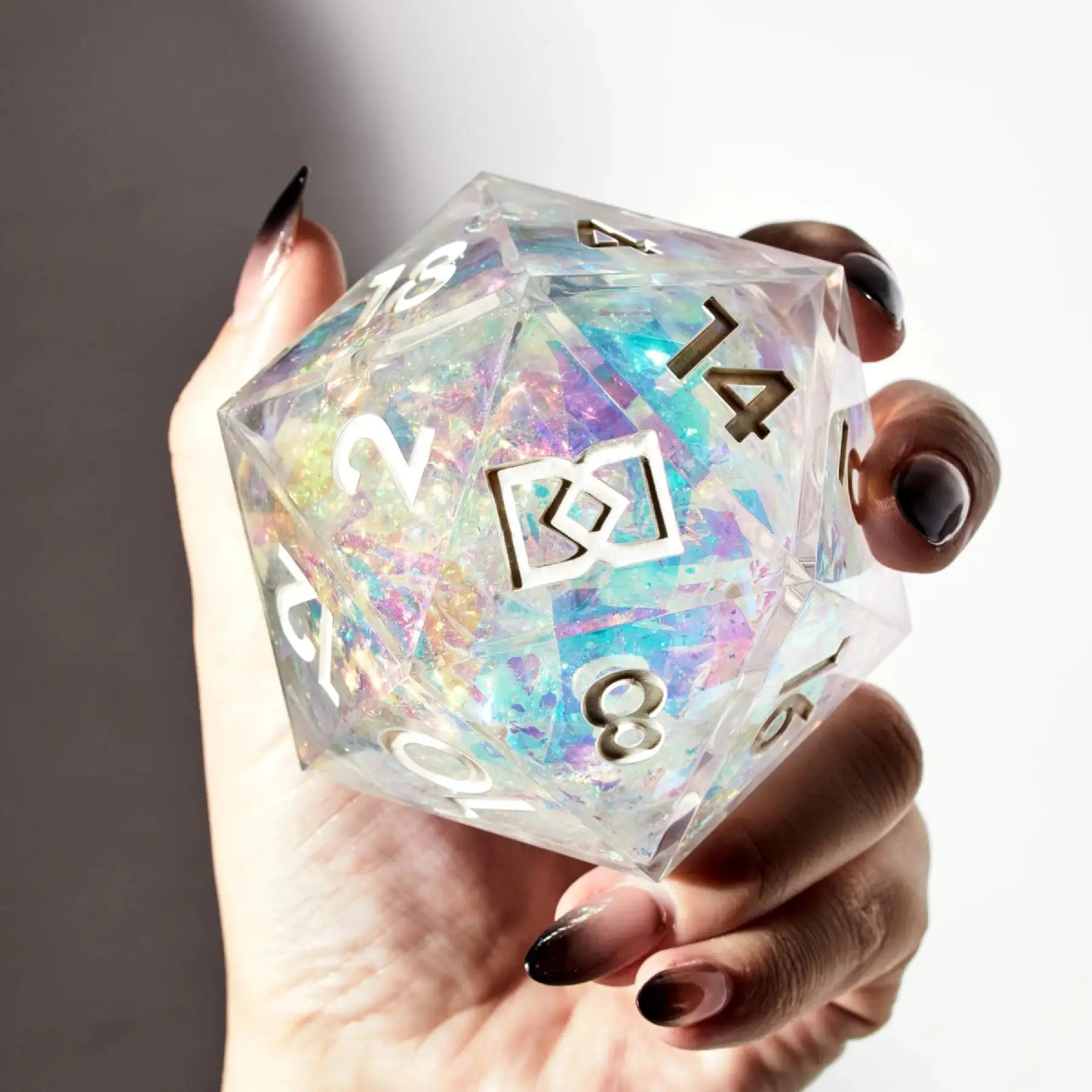
D12
A pretty specialist die, the D12 doesn’t get much love unless you’re playing a barbarian. Used to calculate the damage done by heavy weapons, you roll it after you’ve successfully landed a hit to see how much damage you’ve done to your enemy. Add your ability modifier (determined by your ability score) and any bonuses that apply to get the final score. If you’re a barbarian, you also use it to work out your hit points, rolling it once per level and adding the scores.
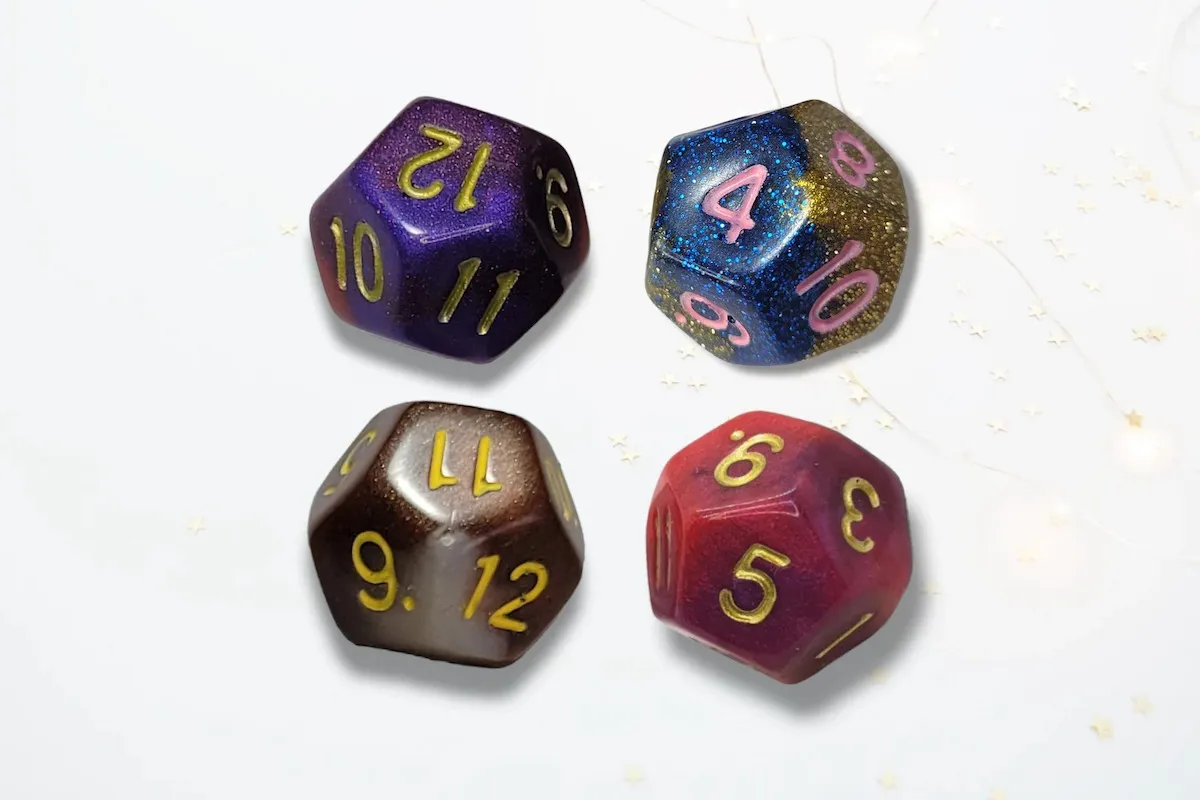
D10
D10s act as hit dice for fighters and paladins, rolled once per level with the scores added together. They’re also for working out damage with a number of specialist weapons and spells (their entries in the manual will specify), and for rolling percentages in combination with the percentile die.
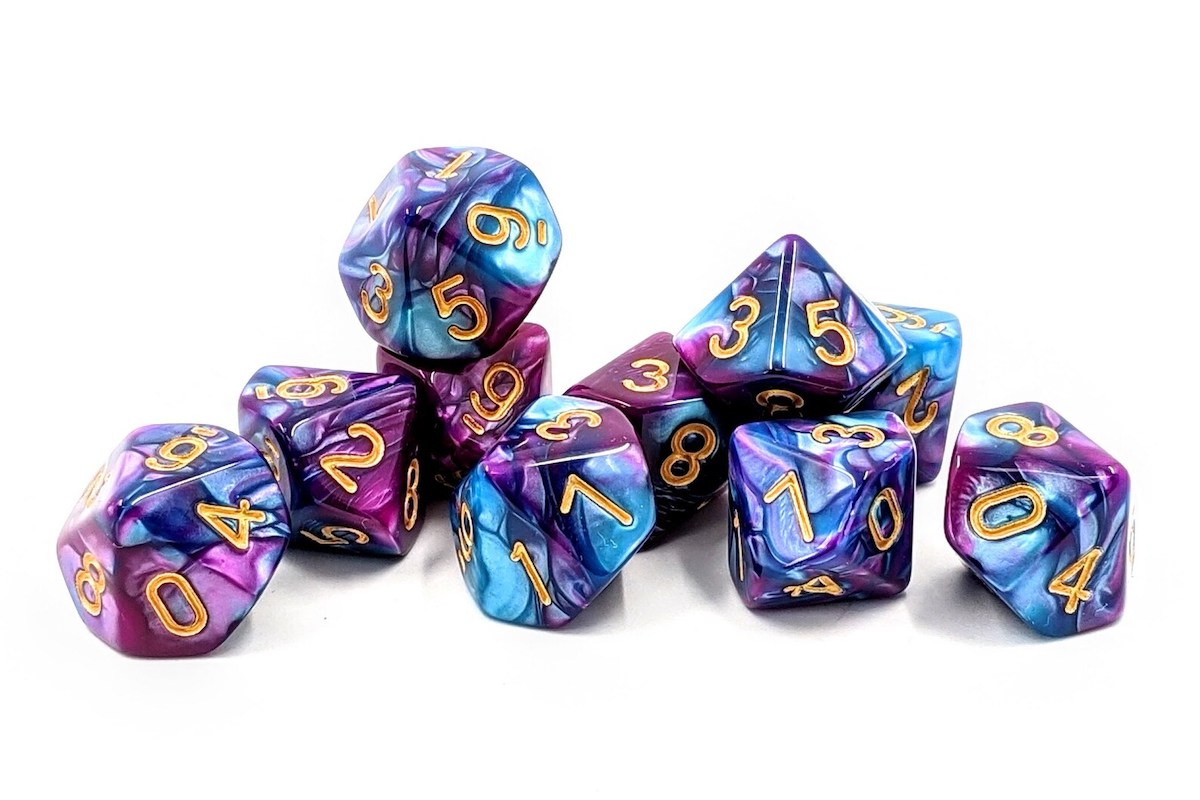
D% (Percentile die)
This is your other 10-sided die, but this one has intervals of ten on the sides instead of single-digit numbers. Roll it together with the D10 to generate percentages. For the most part, you don’t have to worry about this die unless you’re the Dungeon Master as percentages are only really used to generate random encounters.
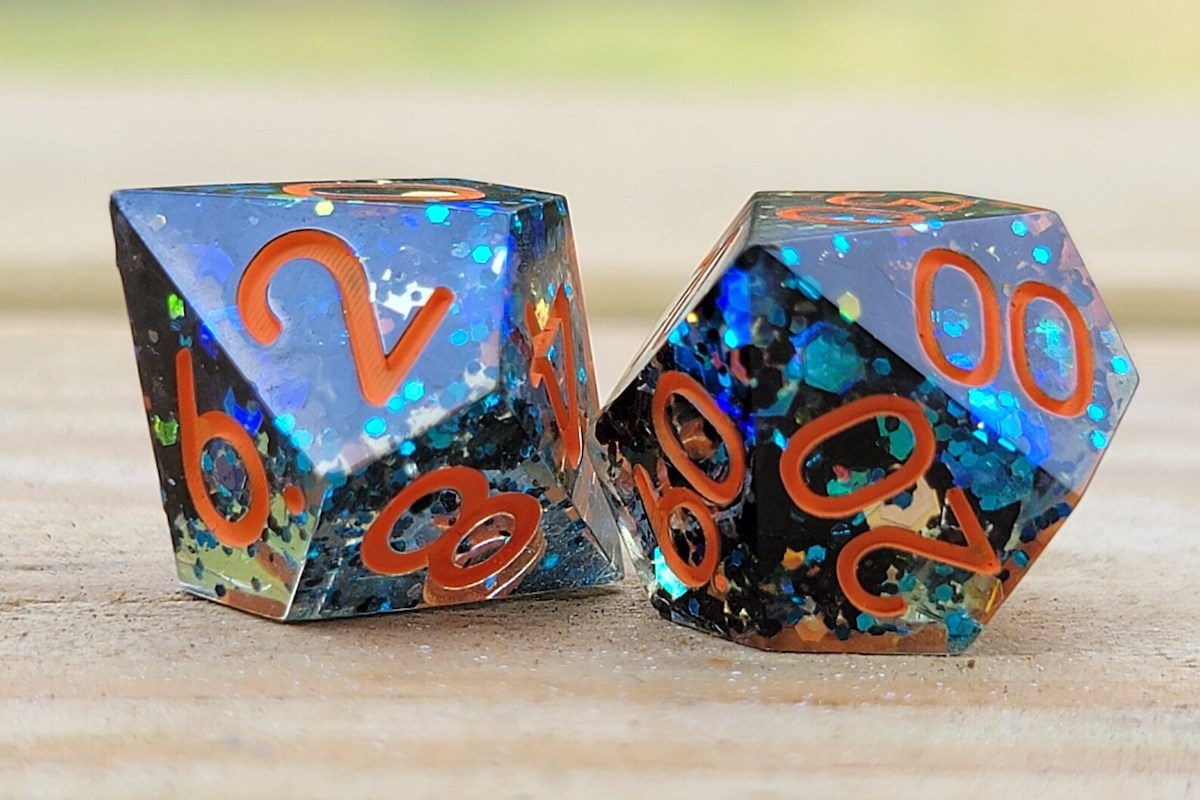
D8
Used to calculate the damage done by swords and similarly large weapons, as well as some spells, the D8 is also the hit die for most classes.
D6
One of the more versatile dice in a set, the D6 is used to calculate wizards’ hit points and the damage done by certain spells. They’re also used during character creation by players who want to randomly generate their character’s ability scores. For each ability, roll four D6, discard the lowest score, and add the other three together.
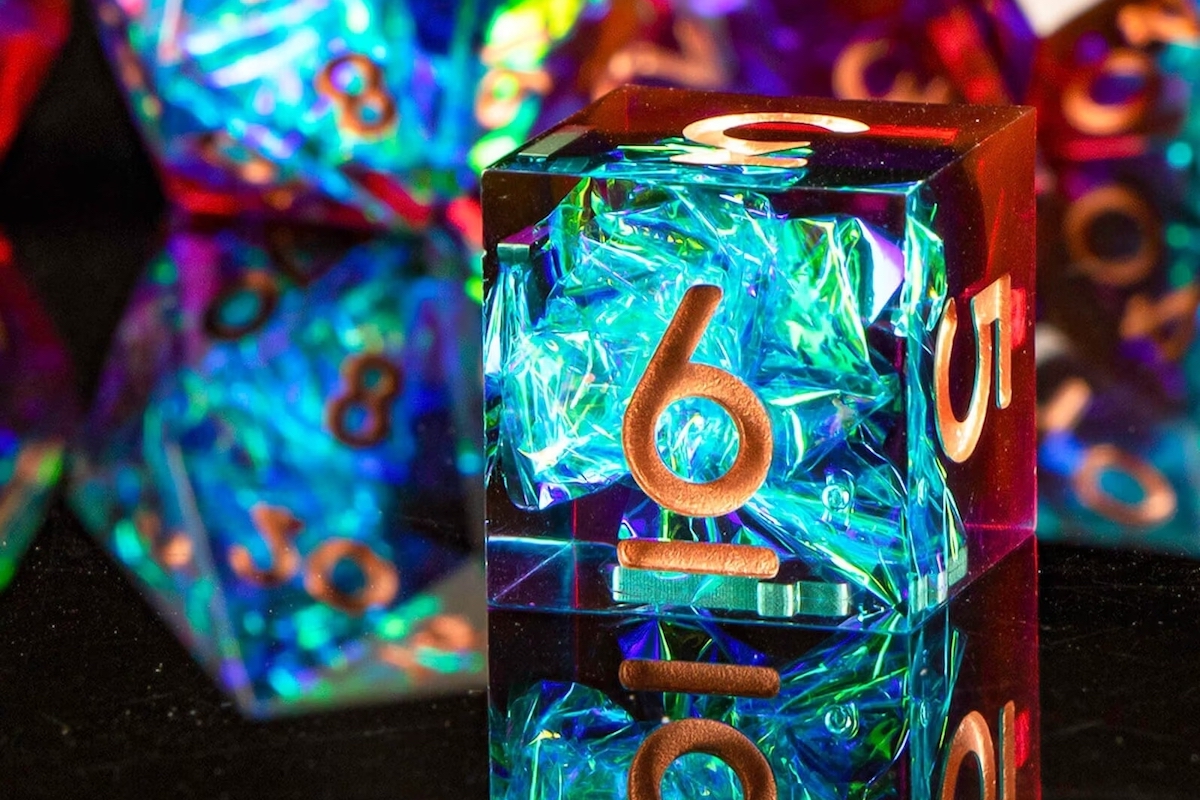
D4
Affectionately known as the caltrop, the D4 is almost as unloved as the D12. Used to calculate the damage done by small weapons and some spells, as well as the number of hit points restored during healing spells.
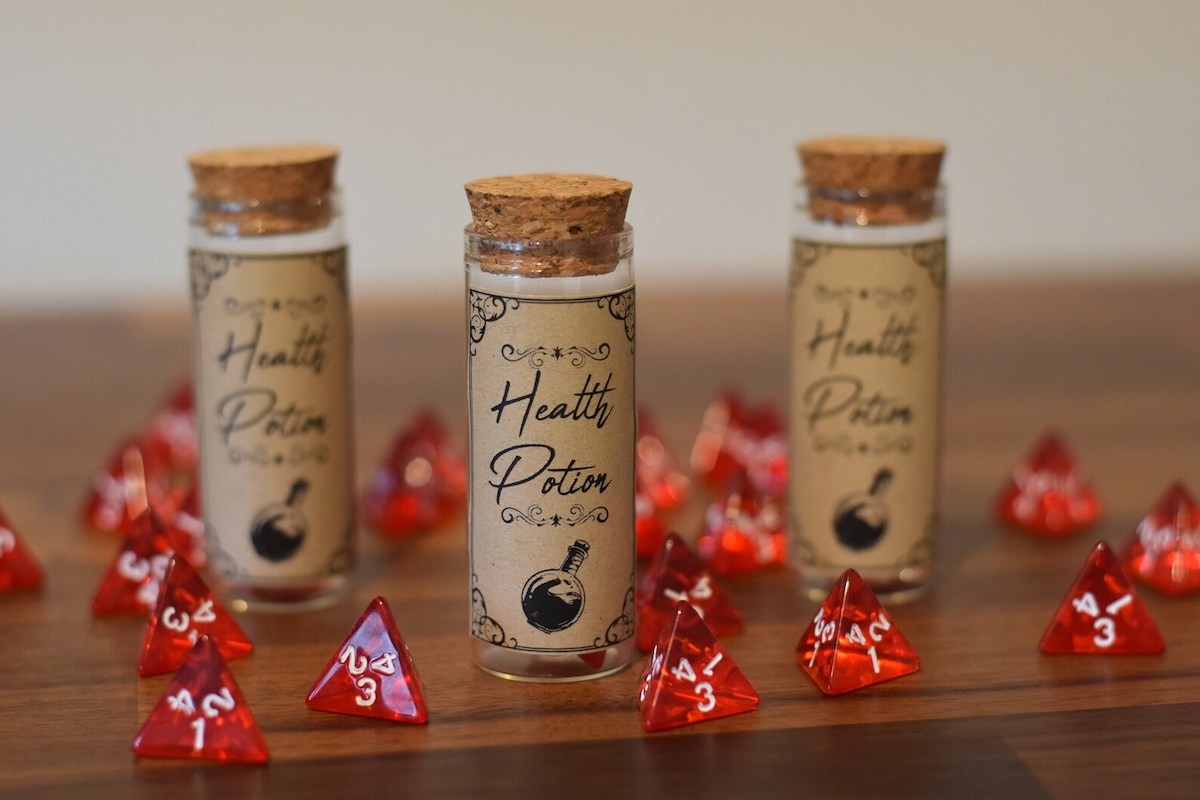
(featured image: Aninka Bongers-Sutherland/Getty Images)



